101+ German Animal Names (with English Translations)
If your childhood was anything like mine animals played a huge role in your language development.
You’d read brightly coloured books with vivid pictures of farmyard animals. You’d watch shows like Sesame Street that took you on constant “trips” to the zoo. And you’d even sing songs about animals people owned. (Old Macdonald had a farm, E-I-E-I-O)
They played a crucial role in learning how to read, write, pronounce words, use nouns and apply descriptive adjectives to what you could see.
But learning about animals is something many adult German learners overlook. Which is a shame, because the benefits of learning this vocabulary don’t just apply to children.
Learning about German animals can help you:
- Discover how “der”, “die” and “das” are applied to different words
- Improve your pronunciation
- Find a better understanding of how long German compound words work
- Sound more fluent (especially if you’re visiting a zoo)
If that sounds like enough reason for you to start learning German animal words, let’s get straight into your new vocabulary list. Then we’ll explore how you can remember them, the articles, and learn some German idioms.
101 German Animals for You to Learn (and Their English Translations)
German Pets
There are more than 34.3 million pets in Germany, so it’s safe to say they’re a big part of German culture. But how do you talk about pets in German?
Here’s a list of the most common “Haustiere” you’ll find in German households and how they translate to English:
- der Hund (the dog)
- der Welpe (the puppy)
- die Katze (the cat)
- der Kater (the tomcat)
- das Kaninchen (the rabbit)
- der Fisch (the fish)
- der Hamster (the hamster)
- das Meerschweinchen (the guinea pig)
- die Schlange (the snake)
- der Vogel (the bird)
- der Papagei (the parrot)
- die Eidechse (the lizard)
- die Maus (the mouse)
- der Gecko (the gecko)
- die Schildkröte (the turtle)
German Farmyard Animals
Farmyard animals will pop up a lot in your German conversations.
Whether you’re taking a walk through the German countryside, or you’re looking to order at a restaurant, you’ll no doubt find these animal names useful to know.
- das Huhn (the chicken)
- das Küken (the baby chick)
- die Kuh (the cow)
- das Schwein (the pig)
- das Schaf (the sheep)
- das Lamm (the lamb)
- die Ziege (the goat)
- das Pferd (the horse)
- der Esel (the donkey)
- die Ente (the duck)
Common German Wildlife
Germany has an abundance of wildlife with over 50,000 different types of animals inside its borders. I couldn’t quite get them all into this list, so here are the key ones to learn:
- der Hase (the hare)
- das Eichhörnchen (the squirrel)
- die Biene (the bee)
- die Spinne (the spider)
- der Wolf (the wolf)
- das Frettchen (the ferret)
- die Fledermaus (the bat)
- der Igel (the hedgehog)
- der Otter (the otter)
- der Hirsch (the deer) – usually describes the male of the species
- das Reh (the deer) – usually describes the female of the species
- der Bär (the bear)
- der Elch (the moose)
- die Spitzmaus (the shrew)
- das Wildschwein (the wild boar)
German Safari Animals
Are you a fan of the animals you’d usually find in warmer climates? Then maybe you’ll want to learn about safari animals.
Learning these can be a significant confidence boost for your learning because there are lots of words that are similar to English, as well as direct loan words you already know!
- der Löwe (the lion)
- die Giraffe (the giraffe)
- der Tiger (the tiger)
- der Elefant (the elephant)
- das Zebra (the zebra)
- der Leopard (the leopard)
- der Panther (the panther)
- der Affe (the monkey)
- der Gepard (the cheetah)
- die Antilope (the antelope)
- das Flusspferd (the hippopotamus)
- der Pavian (the baboon)
- das Nashorn (the rhinoceros)
- der Gorilla (the gorilla)
- das Erdmännchen (the meerkat)
- das Warzenschwein (the warthog)
- der Mungo (the mongoose)
- das Kamel (the camel)
- das Erdferkel (the aardvark)
Unfriendly Encounters: Animals that Bite or Sting
You may want to be prepared to describe the cause of your pain in case you get bitten or stung by of the following animals:
- die Ameise (the ant)
- die Biene (the bee)
- die Wespe (the wasp)
- die Hornisse (the hornet)
- die Qualle (the jellyfish)
- der Skorpion (the scorpion)
- die Giftschlange (the poisonous snake)
- die Spinne (the spider)
- die Zecke (the tick)
- die Mücke (the midge)
- der Moskito (the mosquito)
- die Bremse (the horse fly)
- die Bettwanze (the bedbug)
- der Käfer (the beetle)
- die Küchenschabe/die Kakerlake (the cockroach) – admittedly, they may not typically bite, but also be something you’d want to report if you ever encounter them
German Sea Life
Are you amazed by the wonders of the deep blue sea? Then this portion of the list is for you! You’ll also be able to see lots of the German compound words in action.
- der Wal (the whale)
- der Hai (the shark)
- die Robbe (the seal)
- das Walross (the walrus)
- der Delfin (the dolphin)
- die Krabbe (the crab)
- der Hummer (the lobster)
- die Garnele (the shrimp)
- der Seestern (the starfish)
- der Seeigel (the sea urchin)
- der Tintenfisch (the squid)
- der/die Krake (the octopus)
- die Grüne Meeresschildkröte (the green sea turtle)
- der Stachelrochen (the stingray)
- der Seelöwe (the sea lion)
German Cold Weather Animals
Brr! In my opinion, cold weather animals – like polar bears and penguins – are the coolest on the entire planet (pun intended).
In this list, you’ll see how simple some compound words can be used, as well as see some easy to learn English loan words.
- der Eisbär (the polar bear)
- der Pinguin (the penguin)
- der Schneeleopard (the snow leopard)
- der Narwal (the narwal)
- das Karibu (the caribou) – der Karibu is also considered correct
German Birds
If there’s one thing I love, it’s walking through the German countryside while my girlfriend’s brother tells me about all of the different types of birds we can see. There’s nothing like seeing a hawk on the hunt to show you how incredible nature is!
- die Taube (the pigeon)
- die Elster (the magpie)
- der Spatz (the sparrow)
- die Schwalbe (the swallow)
- die Amsel (the blackbird)
- die Weiße Taube (the dove)
- die Eule (the owl)
- die Seemöwe (the seagull)
- die Krähe (the crow)
- die Gans (the goose)
- der Falke (the falcon)
- der Wellensittich (the budgie)
- der Geier (the vulture)
- der Pfau (the peacock)
German Pond Life
Ponds and lakes make up the centrepieces of many German parks and countryside hikes, so it pays to be able to point out what you can see!
- der Frosch (the frog)
- die Kröte (the toad)
- die Kaulquappe (the tadpole)
- der Karpfen (the carp)
- der Wassermolch (the newt)
German Animal Parts
Want to talk about the specific parts of an animal? Then this final chunk of the list is for you!
- der Schwanz (the tail)
- die Schnauze (the snout)
- die Pfote (the paw)
- die Pranke (the paw of a lion, tiger or bear)
- der Pelz (the animal fur)
- die Feder (the feather)
- das Gefieder (the plumage/feathering)
- der Stoßzahn (the tusk)
- das Horn (the horn)
Language Hacking: How to Remember German Animal Words
After reading that list, you’re probably wondering, “how the heck am I going to remember all of those words!?”
But don’t fret; it’s a lot easier than you think. With these simple language hacks below you’ll be able to remember all of these words, and their articles, without much effort.
Learn the “Cognates” that English and German Share
There are already lots of words for German animals know from speaking English.
Finding which words these are means you don’t need to learn any new vocabulary, and you just need to say them in a German accent!
You’ll find this to be quite common with animals that aren’t native to Germany and have picked up their names in Europe over the last few hundred years. Some of them are even direct loan words and finish with the English plural “-s” at the end.
For example, if you were to take an African safari, you’d be able to talk about:
- gorillas (die Gorillas)
- zebras (die Zebras)
- elephants (die Elefanten)
- antelopes (die Antilopen)
I recommend you spend your first study session picking out these cognates and committing them to memory. You could pick up lots of news words in very little time!
Learn These “Everyday” German Animals To Make Future Learning Easier
German has a great way of pushing two or three words together to make a new word. This is no different when it comes to naming animals, either.
When this happens, the final word in the sequence is usually a normal everyday animal that you could find in German.
This is excellent news for a language hacker. Why?
Because if you learn these common animals and their articles, you can make learning some of the more complicated and rare animals much more comfortable in the future. Let me show you what I mean.
Let’s take the German word for pig, “(das) Schwein”. It’s one of the most commonly used ways to describe less common animals like:
- Guinea Pig (das Meerschwein)
- Porcupine (das Stachelschwein)
- Wild Boar (das Wildschwein**)
- Warthog (das Warzenschwein**)
Because the last word in a sequence is always connected to the article used before the word, you know that every word that ends in “-schwein” starts with “das”.
Here are some other common animals you can learn to maximise this language hack:
- das Pferd (the horse)
- die Maus (the mouse)
- die Kröte (the toad)
- der Bär (the bear)
“-chen” is Always Neutral
The end of a word in German is a standard indicator of whether a word needs “der”, “die”, or “das”. This can be a huge time saver and help you remember which of those pesky articles belongs where.
One of the most common animal word endings is “-chen”, like das Eichhörnchen (“squirrel”) or das Kaninchen (“rabbit”). Germans use this to signify an animal is small or cute. But in this case, it’s just ingrained into the everyday word for that animal.
When you learn a word that ends in “-chen” it is always neutral and will need the article “das”, to go before it.
If you’ve seen an animal that you think is small and cute, you can also add “-chen” to the end of any of the animal words you’ve learned. For example, “der Bär” would become, “das kleine Bärchen” to show its small size and fluffiness.
“-e” is Almost Always Feminine
Sticking with articles. If the word ends in “-e” there’s a good chance it’ll use the feminine article, “die”, like:
- die Katze (the cat)
- die Eidechse (the lizard)
- die Ente (the duck)
This rule can also be applied to most nouns in the German language, too.
Guess The Article Based On Your Perceptions
This is a little language hack I created when learning German to help me remember the different articles for the words.
When you think of an animal which gender do you think it is? Take a look at this list and see what you think:
- Lion
- Bear
- Duck
- Cat
- Mouse
- Rabbit
If you’re like me you probably thought it was:
- Male
- Male
- Female
- Female
- Female
- Male
This is based on what I’ve seen in movies, TV and how these animals were described to me as a child. If you ever read “Peter Rabbit”, for example, you might be inclined to think a rabbit is a boy.
Funnily enough, if your list were like mine, you’d have matched five of the animals up to their genders in German too. The only one that was wrong is Rabbit (das Kaninchen) which is neutral. So if you were guessing these perceptions would have helped you make an educated guess!
Germanic languages – like German and English – often use the male or female form of a word to describe an entire breed of animal. For example, die Katze is used to describe all cats. But a male cat is really called der Kater. The same as how die Ente is used to describe ducks, but the male of the species is actually der Erpel.
Not everyone’s perception will be the same, but it’s worth a try if you’re really not sure what to use!
German Animal Phrases and Idioms
German is an excellent language for turns of phrase and idioms. And, by learning to use them, you can sound more fluent to a native speaker.
Here are seven familiar and fun to learn idioms German idioms to help you boost your vocabulary and understand some of those tricky sayings that sound weird out of context.
Die Katze im Sack kaufen
This phrase literally translates to, “To buy a cat in a bag”, and it refers to buying to something without first looking at it.
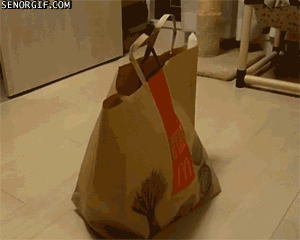
The best way to bring this phrase to life is to think of buying one of those mystery boxes from eBay, where you pay a certain amount for an unknown item!
Einem geschenkten Gaul schaut man nicht ins Maul
If you’re a native English speaker you probably already know this saying. It translates to, “Don’t look a gift horse in the mouth”.
It really means if someone is offering you something for free, or a better price, don’t try and ask for more on top of it!
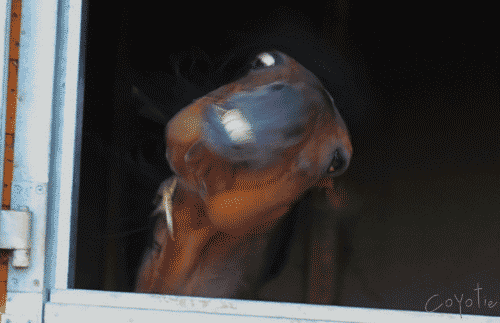
Gaul is an older German word for “Pferd”
Einen Vogel haben
This phrase translates to, “Have a bird”.

It’s a term used to describe someone who is crazy, doing something out of the ordinary, or is just a bit, well…weird.
Du Fuchs
Another phrase we share between German and English. This translates to, “you fox”, and it used to describe someone who is sly, cunning or clever.
Da steppt der Bär
This is one of my favourite sayings. It literally translates to, “There is where the bear is tap dancing”, which makes zero sense in any language.
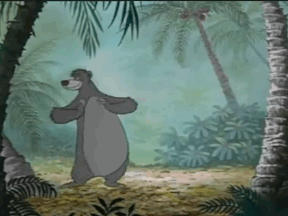
But it’s used to describe a good party, festival or event that lots of people want to attend or are having a good time at.
If you’re trying to convince a friend to join you at a party, you could also tell them, “Hier steppt der Bär”, to tell them where you are is great.
Hier sieht es aus, wie im Schweinestall
If you’ve let a room in your house get dirty or untidy, you might hear a German use this phrase to describe how it looks.
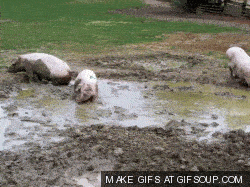
It means, “It looks like a pigsty in here!”, and means that everything is a mess and needs tidying up (quickly).
Bei diesem Wetter schickt man keinen Hund vor die Tür
Stormy outside? Then you might want to use this phrase!
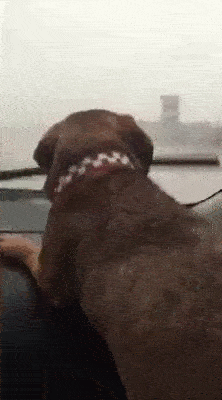
It means, “In this weather, you wouldn’t send your dog outside”, and means the weather isn’t good enough for anyone to go out in. You could also compare this to, “It’s too wet for ducks” in English.
Hungry (For Vocab) Like The Wolf…
Phew! That was a huge list. Well done for making it through.
I hope by now you feel more comfortable with German animals and that you’ve already increased the words in your vocabulary. But now I want to hear from you.

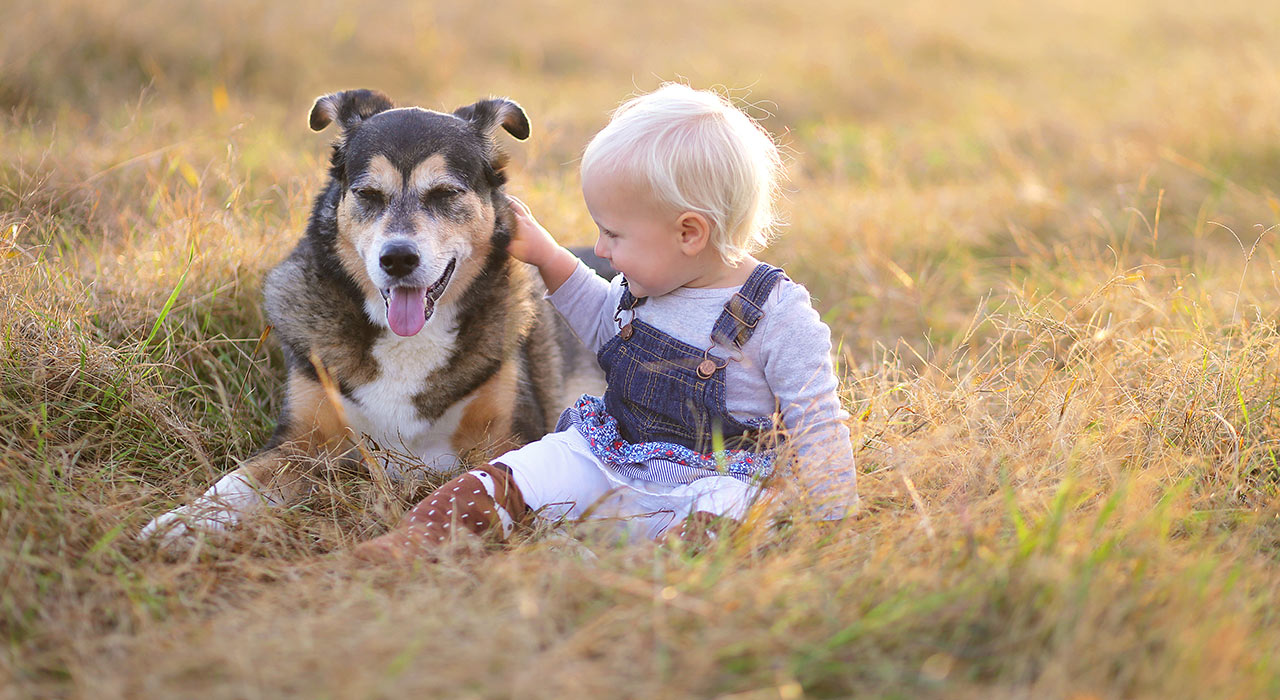

Social